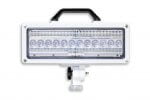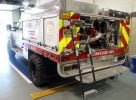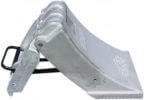The Grant Writing Process
Recently, you likely read an article on common mistakes on grant writing especially in emergency services. There were several mentioned but this was not an all-inclusive list. One area that is often noted is that the firefighters writing these grants do not know the process or just throw a grant together. While this would potentially work to meet the submission guidelines, this does not mean that the proposal is quality. This hurts the opportunity of being funded.
There are many steps that make up the entire grant writing process. This process, when followed correctly, normally increases the chances of obtaining funding. It also provides for other members to be involved. In grant writing, the saying “Two heads are better than one,” can really be the case.
Pre-Grant Steps
The first step in the grant writing process is identifying needs and focus. In this step, we should develop what in essence ends up being a “wish list.” This list should document several points of information; but at least the item you want to fund, the quantity of the item, the estimated cost of the item, and any notes on how it could have helped in a previous fire or event, or what problem by having this item you could prevent.
This listing does not have to be complex. Some people use elaborate Excel Spreadsheets with different cells that sum different costs and such. Others have used simple tables in Word or even something handwritten. The main point here is that you have a wish list and the minimal points listed above. See Table 1 for an Example.
Table 1
| Item | Cost | Justification |
| Thermal Imaging Cameras (Qty. 5) | $75,000 | Multiple high occupancy residential areas often requiring multiple Engine Company responses |
| AED’s (Qty. 5) | $5,000 | Initiating first responder program |
| Medium Duty Rescue Truck | $305,000 | Due to assessment of calls, seeing increase of technical rescue |
| Fire Prevention Public Campaign | $10,000 | Increasing number of fires leading to need for public campaign |
The second step in the process is finding a grant. This is not always an easy step. As a best practice, it is recommended that you maintain a spreadsheet of the grants, their deadline, etc. This way you can always know what grants are out there. Most grants will allow you to reapply even if you are funded but may require a time delay before you apply again.
So where can you find grants? First, talk to other firefighters. Many have applied for grants so getting it first hand from colleagues can be very beneficial. Secondly, use search engines as possible. Use various terms such as “firefighter grants,” “emergency grants,” and “non-profit grants” (if you are a non-profit). Finally, look at newspapers and other publications. Normally you can find grants in these occasionally. These may not be for large projects but can still aid in funding something off of your wish list.
Grant Writing
The next step includes writing the grant proposal. This can be an arduous process and time needs to be spent on making the proposal flawless. This is where you are going to influence someone to fund your project. Certain grants may have a small step before the grant proposal; called Letter of Inquiry. This is a step where the funder either approves you to continue in the process due to their interest in your project or they reject the project. This ranges from simply answering two questions to submitting two or three-page Executive Summary type documentation. Either way, this or the proposal is your chance to make a great first impression. Do not take this lightly.
Each grant has its own proposal requirements. Some grants leave the proposal totally up to the grant writer. The funding agency simply gives a few pointers to cover and allows the grant writer to write the proposal. Other grants have very specific sections to include or even forms that make up the entire grant proposal. Be very specific in the proposal and make sure you can get your point across. Have someone, other than a member, read the proposal and make revisions based on these critiques.
There are always some final tips. Always make sure you leave time for issues to arise and to address them. Every grant has a deadline and you want to make sure you can get the proposal in on time or you just wasted time to submit it. Use spell check but read the proposal over and over again. Finally, make sure you include every supporting document that the funding agency requires.
The Waiting
The next part is one of the hardest. It is the waiting. During this period of time, the funding agency is reviewing the proposals. This is done on their time frame. They may stay on their time schedule or they may stray from it. Have patience and try to focus on other work. The funding agency may reach out for additional information. If this is done then promptly address their request. Do not have them waiting on you.
Then comes the announcement via email, letter or other means. You will find out whether you have been awarded or rejected. Of course, some grant funding agencies do not send out rejection letters. This is not proper per se but is the reality of it.
The Results
If you are awarded the grant, the notification should inform you of how you should proceed. It is likely they will need some banking information such as a checking account number and routing number. They will also likely need an official acceptance letter from your department. Make sure this is done in a timely fashion. They will lead you on the rest of the journey. Ensure that you fill out any post award paperwork you have to do.
If you are rejected, then take a look at what they say about your proposal. Make sure you keep an open mind. Do they recommend certain aspects? When can you reapply? How could you increase your chances for next time? Take the time to do an after action (grant proposal) discussion. Find ways to improve.
Cyclical
The grant writing process is a cyclical process. Once you get the results, the process starts over again. Review the wish list. Let’s hope that you have to remove something since you just got funded. Maybe you need to add more stuff due to needs. Work with others in your agency to prepare for the next round and be efficient in the process.















